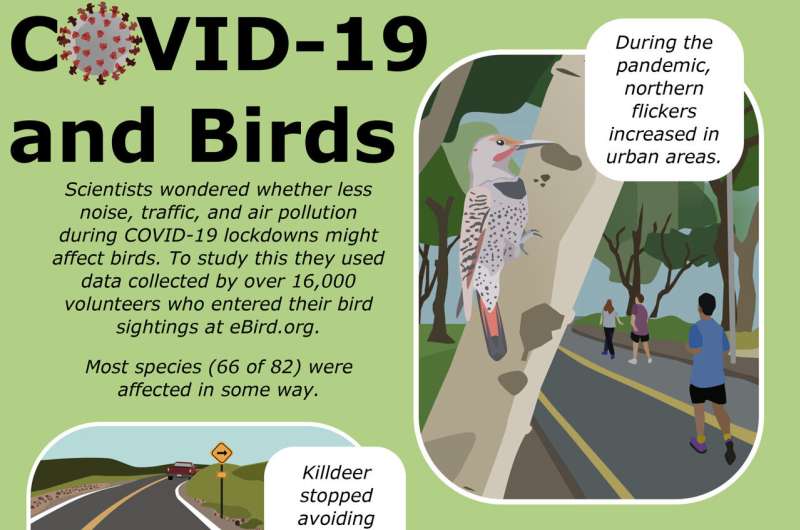COVID-19 lockdowns influenced most North American birds. Credit: Jessica Waldinger
A team of researchers from several institutions in Canada and one in the U.S. has found that the numbers of some birds in urban areas increased during last year's pandemic lockdown. In their paper published in the journal Science Advances, the group describes how they used data from eBird, a large biodiversity community science program run by Cornell's Lab of Ornithology, to compare bird numbers in different parts of Canada and the U.S. during the early stages of the pandemic and what they learned from their effort.
Anecdotal evidence arising from people living in urban areas suggested that last year's lockdown during the early stages of the pandemic gave many types of animals the opportunity to venture into areas temporarily abandoned by people—a time many in the field have described as an "anthropause." In this new effort, the researchers wondered if birds were among those that had benefited from the lockdown, and if so, to what degree. To find out, they accessed data held by eBird, a program that hosts an online database of bird observations made by volunteers across Canada and the U.S.
The database contains information on over 4.3 million birds of 82 species going back to 2002, when eBird was launched. This allowed the researchers to compare the number of sightings of bird types in sites all across North America for the years 2017 to 2020. Factoring out the sudden increase in posts by bored people in lockdown, the researchers found that the majority of species became more abundant in most urban areas and that such increases were particularly noticeable along major roads and near airports. Overall, they found increases in 80% of the species in the database. Interestingly, there were some species that maintained levels with prior years and some that actually had lower numbers.
The findings indicate that the birds showed a high degree of adaptability in a very short time frame. They also note that the sudden rise in bird numbers in certain areas showed that it is possible to create spaces for birds in designated areas by simply reducing the bustle of human activity.
More information: Michael B. Schrimpf et al, Reduced human activity during COVID-19 alters avian land use across North America, Science Advances (2021). DOI: 10.1126/sciadv.abf5073
Journal information: Science Advances
© 2021 Science X Network
























